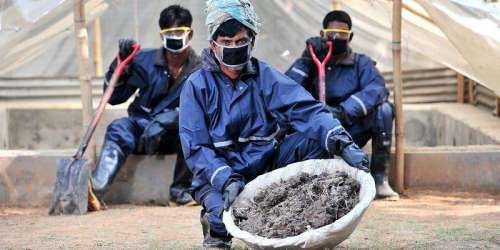Managing Human Waste in Bangladesh
Published on by Dusko Balenovic, Previous Network Manager at The Water Network in Academic
A study about willingness-to-pay the costs of emptying pit latrines in rural sub-district of Bangladesh has shown that small monthly payments are more affordable.

Pit latrine workers in Bangladesh collecting and transporting human waste to a site where it is processed into fertiliser. Image: Neil Palmer (IWMI). Credit: University of Leeds
The study was done by the BRAC WASH Programme II calculated the actual costs of sludge management from latrines.
They investigated people’s willingness to pay to get their pit latrines emptied and the faecal sludge is taken to an area where it is made into fertilizer and biogas.
Since the average sludge accumulation rate is calculated at 0.11 liters per person per day, the latrine will fill every 3 or 4 years.
Instead of paying every three to four years the cost that is a great part of people’s income, monthly payments are an easier investment in human waste management.
The study has already influenced the structure of faecal sludge management and initiated changes of the approach collectors are using.
Proper sludge management will affect good health help the environment.
Media
Taxonomy
- Feces
- Sanitation
- Water & Sanitation
- Sanitation & Hygiene
- Waste Disposal
- Waste Management
- Water Sanitation & Hygiene (WASH)